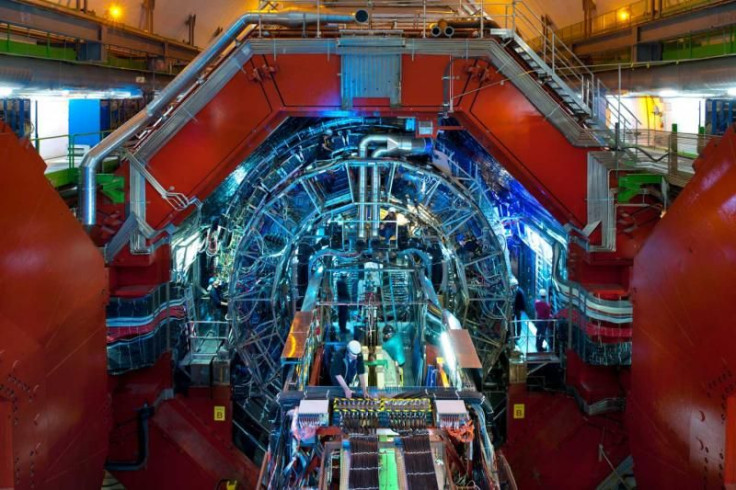CERN Experiment Confirms Matter-Antimatter CPT Symmetry For Light Nuclei, Antinuclei

Days after scientists at CERN’s Baryon-Antibaryon Symmetry Experiment (BASE) measured the mass-to-charge ratio of a proton and its antimatter particle, the antiproton, the ALICE experiment at the European organization reported similar measurements for light nuclei and antinuclei. The measurements, made with unprecedented precision, add to growing scientific data confirming that matter and antimatter are true mirror images.
“The measurements by ALICE and by BASE have taken place at the highest and lowest energies available at CERN, at the LHC and the Antiproton Decelerator, respectively,” CERN Director-General Rolf Heuer said in a statement Monday. “This is a perfect illustration of the diversity in the laboratory’s research program.”
Antimatter shares the same mass as its matter counterpart, but has opposite electric charge. The electron, for instance, has a positively charged antimatter equivalent called positron. Scientists believe that the Big Bang created equal quantities of matter and antimatter 13.8 billion years ago. However, for reasons yet unknown, matter prevailed, creating everything we see around us today -- from the smallest microbe on Earth to the largest galaxy in the universe.
Last week, in a paper published in the journal Nature, researchers reported a significant step toward solving this long-standing mystery of the universe. According to the study, 13,000 measurements over a 35-day period show -- with unparalleled precision -- that protons and antiprotons have identical mass-to-charge ratios.
The experiment tested a central tenet of the Standard Model of particle physics, known as the Charge, Parity, and Time Reversal (CPT) symmetry. If CPT symmetry is true, a system remains unchanged if three fundamental properties -- charge, parity, which refers to a 180-degree flip in spatial configuration, and time -- are reversed.
The latest study takes the research over this symmetry further. The ALICE measurements show that CPT symmetry holds true for light nuclei such as deuterons -- a hydrogen nucleus with an additional neutron -- and antideuterons, as well as for helium-3 nuclei -- two protons plus a neutron -- and antihelium-3 nuclei. The experiment, which also analyzed the curvature of these particles' tracks in ALICE detector’s magnetic field and their time of flight, improve on the existing measurements by a factor of up to 100.
A violation of CPT would not only hint at the existence of physics beyond the Standard Model -- which isn't complete yet -- it would also help us understand why the universe, as we know it, is completely devoid of antimatter.
© Copyright IBTimes 2025. All rights reserved.






















